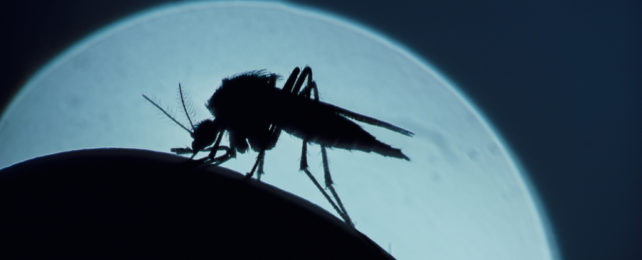The relentless accuracy with which some mosquito species hunt down humans may result from their bizarrely wired olfactory system, which has an in-built backup for detecting human scents.
Mosquitoes can sense CO2 or sweat wafting off humans using unique chemoreceptors in their antennae and the maxillary palp, a jointed sensory appendage of insects.
A new study led by researchers at Boston University and Rockefeller University explains why mosquitoes are so good at sensing us, even when researchers genetically disable human-specific chemoreceptors.
According to the study, at least one mosquito species, Aedes aegypti, has an entirely different way of organizing its olfactory system compared to most animals.
Using CRISPR as a gene editing tool, the researchers developed mosquitos whose olfactory neurons would express fluorescent proteins and glow under a microscope when certain smells were nearby. This allowed the researchers to see how different scents stimulated the olfactory system.
It turns out that A. aegypti connects several olfactory sensory receptors to the one neuron, a process called coexpression.
According to this team, this overturns a core principle of olfactory science, which states that each neuron only has one chemoreceptor associated with it.
"This is shockingly weird," says Boston University neuroscientist and senior author Meg Younger. "It's not what we expected."
"The central dogma in olfaction is that sensory neurons, for us in our nose, each express one type of olfactory receptor," says Younger.
This axiom holds for the honeybee (Apis mellifera), the tobacco hornworm (Manduca sexta), and fruit flies (Drosophila melanogaster), which all have roughly the same number of chemosensory receptors as olfactory glomeruli. (Glomeruli are spherical structures in the brain that receive olfactory signals.)
In A. aegypti, however, there are at least twice as many receptors as glomeruli, a "striking mismatch", the researchers write.
The results indicate an unconventional olfactory system that coexpresses multiple sensory receptors within individual neurons.
"The redundancy afforded by an olfactory system … may increase the robustness of the mosquito olfactory system and explain our long-standing inability to disrupt the detection of humans by mosquitoes," the researchers conclude.
The lure of a blood meal is strong, as female mosquitos must feed on human or animal blood to reproduce.
A long-term goal of the research is to create improved mosquito repellents that effectively hide human scent or develop attractants that distract mosquitoes from their meal.
Mosquitoes' talent for locating humans makes mosquitoes prolific vectors for viral diseases like dengue, Zika, yellow fever, and chikungunya. Collectively, these viruses kill around 700,000 people every year.
"As we learn about how odor is encoded in their olfactory system, we can create compounds that are more effective based on their biology," says Younger.
This article was published in Cell.
